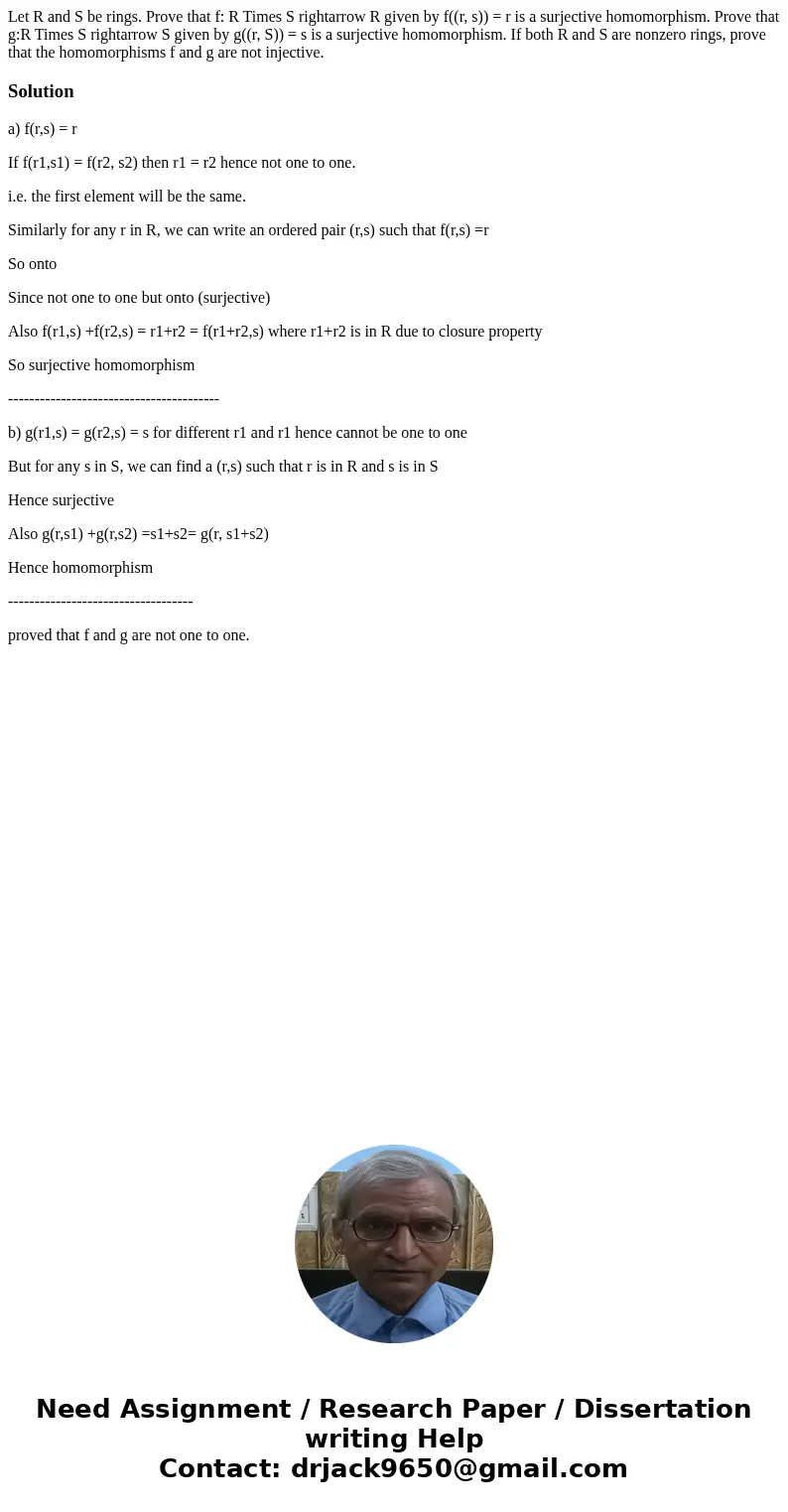Let R and S be rings Prove that f R Times S rightarrow R giv
Let R and S be rings. Prove that f: R Times S rightarrow R given by f((r, s)) = r is a surjective homomorphism. Prove that g:R Times S rightarrow S given by g((r, S)) = s is a surjective homomorphism. If both R and S are nonzero rings, prove that the homomorphisms f and g are not injective.
Solution
a) f(r,s) = r
If f(r1,s1) = f(r2, s2) then r1 = r2 hence not one to one.
i.e. the first element will be the same.
Similarly for any r in R, we can write an ordered pair (r,s) such that f(r,s) =r
So onto
Since not one to one but onto (surjective)
Also f(r1,s) +f(r2,s) = r1+r2 = f(r1+r2,s) where r1+r2 is in R due to closure property
So surjective homomorphism
----------------------------------------
b) g(r1,s) = g(r2,s) = s for different r1 and r1 hence cannot be one to one
But for any s in S, we can find a (r,s) such that r is in R and s is in S
Hence surjective
Also g(r,s1) +g(r,s2) =s1+s2= g(r, s1+s2)
Hence homomorphism
-----------------------------------
proved that f and g are not one to one.

 Homework Sourse
Homework Sourse